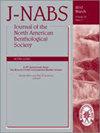Algal bioassessment metrics for wadeable streams and rivers of Maine, USA
引用次数: 26
Abstract
Abstract. Many state water-quality agencies use biological assessment methods based on lotic fish and macroinvertebrate communities, but relatively few states have incorporated algal multimetric indices into monitoring programs. Algae are good indicators for monitoring water quality because they are sensitive to many environmental stressors. We evaluated benthic algal community attributes along a landuse gradient affecting wadeable streams and rivers in Maine, USA, to identify potential bioassessment metrics. We collected epilithic algal samples from 193 locations across the state. We computed weighted-average optima for common taxa for total P, total N, specific conductance, % impervious cover, and % developed watershed, which included all land use that is no longer forest or wetland. We assigned Maine stream tolerance values and categories (sensitive, intermediate, tolerant) to taxa based on their optima and responses to watershed disturbance. We evaluated performance of algal community metrics used in multimetric indices from other regions and novel metrics based on Maine data. Metrics specific to Maine data, such as the relative richness of species characterized as being sensitive in Maine, were more correlated with % developed watershed than most metrics used in other regions. Few community-structure attributes (e.g., species richness) were useful metrics in Maine. Performance of algal bioassessment models would be improved if metrics were evaluated with attributes of local data before inclusion in multimetric indices or statistical models.美国缅因州可涉水溪流和河流的藻类生物评价指标
摘要许多州的水质机构使用基于水生鱼类和大型无脊椎动物群落的生物评估方法,但相对较少的州将藻类多指标纳入监测计划。藻类对许多环境压力敏感,是监测水质的良好指标。我们评估了影响美国缅因州可涉水溪流和河流的土地利用梯度的底栖藻类群落属性,以确定潜在的生物评价指标。我们从全州193个地点收集了鳞藻样本。我们计算了普通类群的全磷、全氮、比电导、不透水覆盖百分比和已开发流域百分比的加权平均最优值,其中包括所有不再是森林或湿地的土地利用。我们根据分类群的最优值和对流域干扰的响应,划分了缅因河的容忍值和类别(敏感、中等、容忍)。我们评估了来自其他地区的多指标指标和基于缅因州数据的新指标中使用的藻类群落指标的性能。缅因州数据特有的指标,如缅因州敏感物种的相对丰富度,与其他地区使用的大多数指标相比,与%发达流域的相关性更强。在缅因州,很少有群落结构属性(如物种丰富度)是有用的指标。在将指标纳入多指标指数或统计模型之前,利用当地数据的属性对指标进行评价,可以提高藻类生物评价模型的性能。
本文章由计算机程序翻译,如有差异,请以英文原文为准。
求助全文
约1分钟内获得全文
求助全文

 求助内容:
求助内容: 应助结果提醒方式:
应助结果提醒方式:


